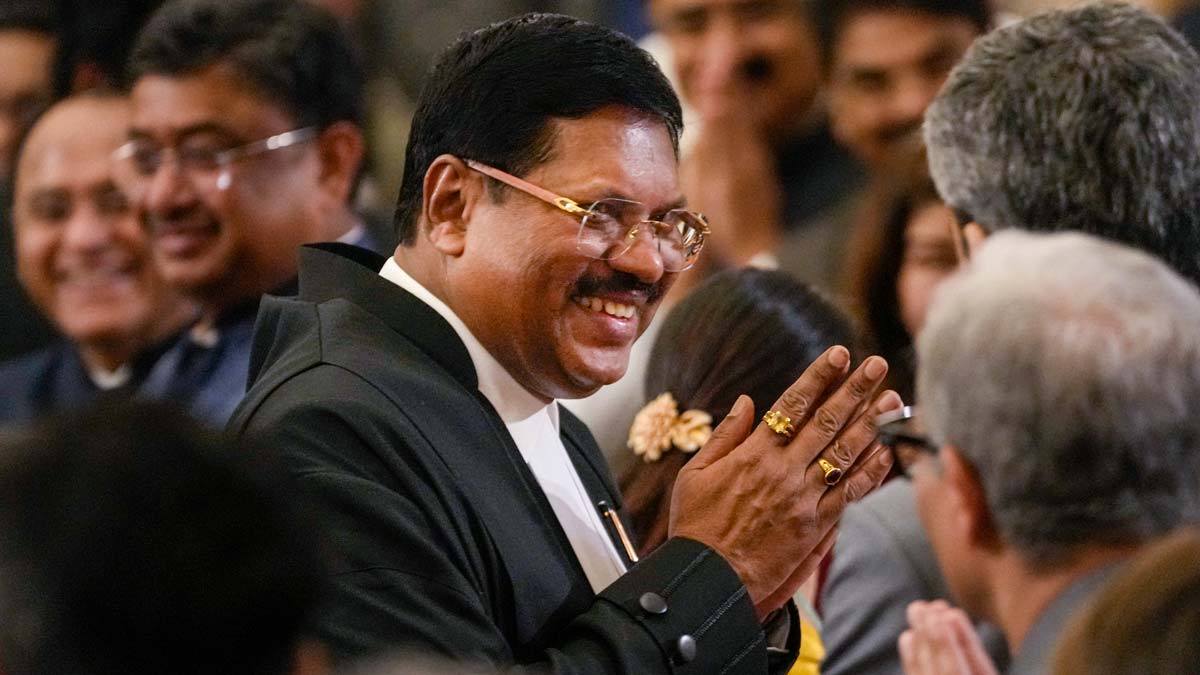Chief Justice of India B.R. Gavai: From slums of Amravati to highest echelons of Indian judiciary
 Justice Bhushan Ramkrishna Gavai during his swearing-in as the 52nd Chief Justice of India, at Rashtrapati Bhavan in New Delhi | PTI
Justice Bhushan Ramkrishna Gavai during his swearing-in as the 52nd Chief Justice of India, at Rashtrapati Bhavan in New Delhi | PTI
Justice Bhushan Ramkrishna Gavai stood with quiet pride at Rashtrapati Bhavan on Wednesday as he was sworn in as the 52nd Chief Justice of India. By his side were his 84-year-old mother, Kamaltai, along with his wife, daughter, and son, their beaming smiles reflecting a journey marked by resilience, love, and an inspiring rise from the slums of Amravati to the highest echelons of the Indian judiciary.
The Chief Justice of India touched his mother’s feet after taking oath. Prime Minister Narendra Modi was also seen going upto the CJI’s mother to greet her.
As the first Buddhist and second dalit Chief Justice after Justice K.G. Balakrishnan, Gavai’s rise is a testament to grit and the transformative power of B.R. Ambedkar’s legacy.
Born on November 24, 1960, in Amravati, Maharashtra, Gavai grew up in a modest home steeped in social activism. His father, Ramkrishna known as Dadasaheb Gavai, a prominent Ambedkarite and former governor, inspired his commitment to equality. His mother, Kamaltai, a schoolteacher, instilled discipline and empathy, ensuring young Bhushan helped with chores despite their humble circumstances.
ALSO READ | Justice Sanjiv Khanna: A legacy of law and liberty
Justice Gavai studied in a municipal school, sitting on the floor in classrooms without benches. He earned commerce and law degrees from Amravati University. Joining the Bar in 1985, he honed his skills under Raja S. Bhonsale, a former advocate general, before practising independently at the Bombay High Court.
Elevated to the Bombay High Court in 2003, Gavai served across its benches, earning respect for his fairness. In 2019, he joined the Supreme Court, where he authored landmark rulings on demonetisation, Article 370, and electoral bonds.
His 2024 opinion on sub-classification within Scheduled Castes, rooted in his own experiences, championed nuanced equity. “Not all start from the same point,” he wrote, echoing his belief in justice that uplifts the marginalised.
On his first day as the Chief Justice of India, Gavai paid tribute to Mahatma Gandhi and Ambedkar’s statues at the Supreme Court, a nod to their ideals of unity and equality.
His six-month tenure, ending on November 23, 2025, aims to tackle case pendency and promote judicial diversity.
Both sitting and retired judges of the Supreme Court and High Courts attended the ceremony.
Gavai also plans to convene a meeting of all judges to outline his vision, discuss the way forward, and invite suggestions. With just about 10 days remaining before the court’s annual summer recess, the court will still function partially, with at least three Benches continuing to hear cases during the break.
India